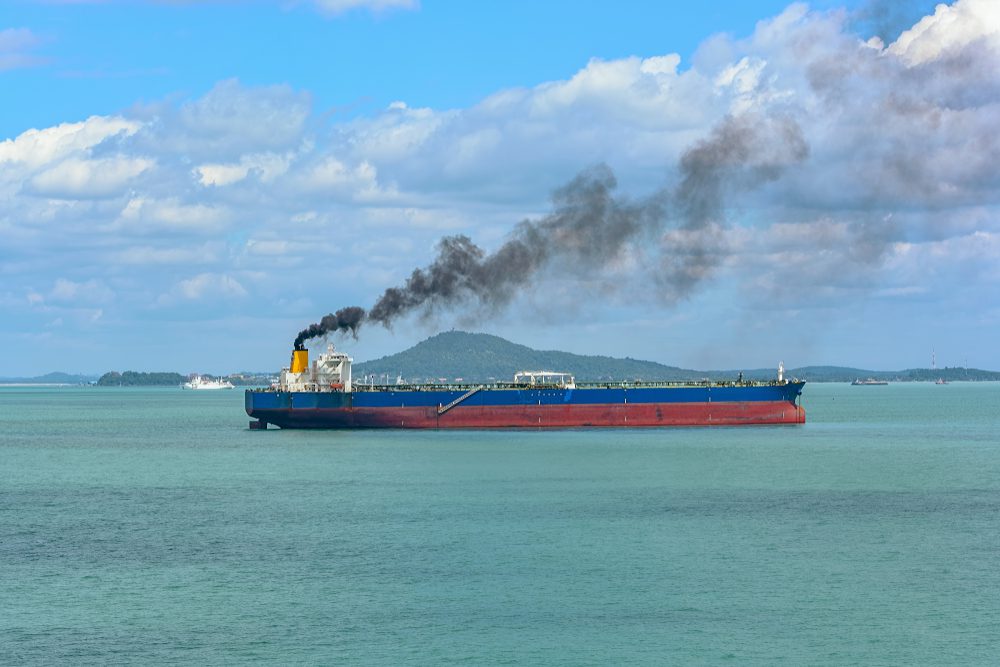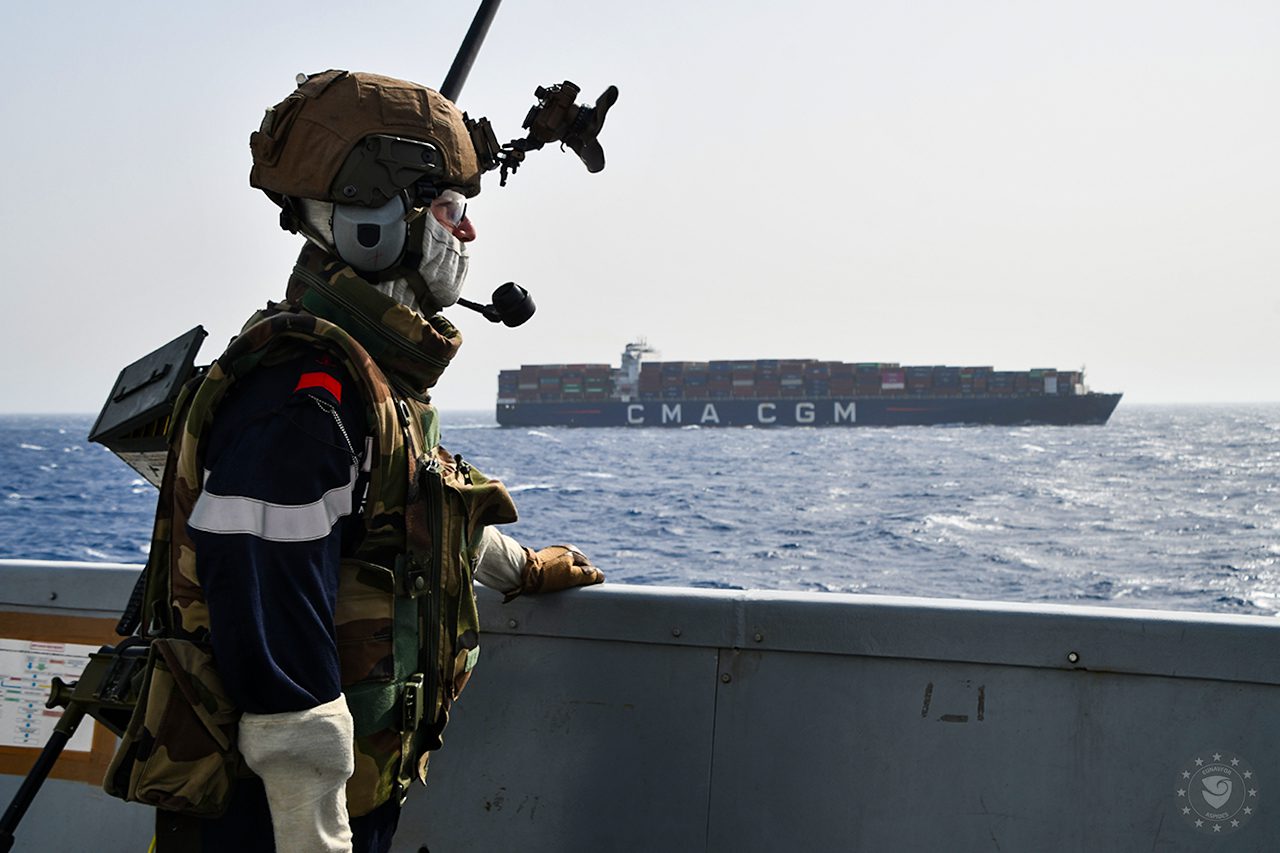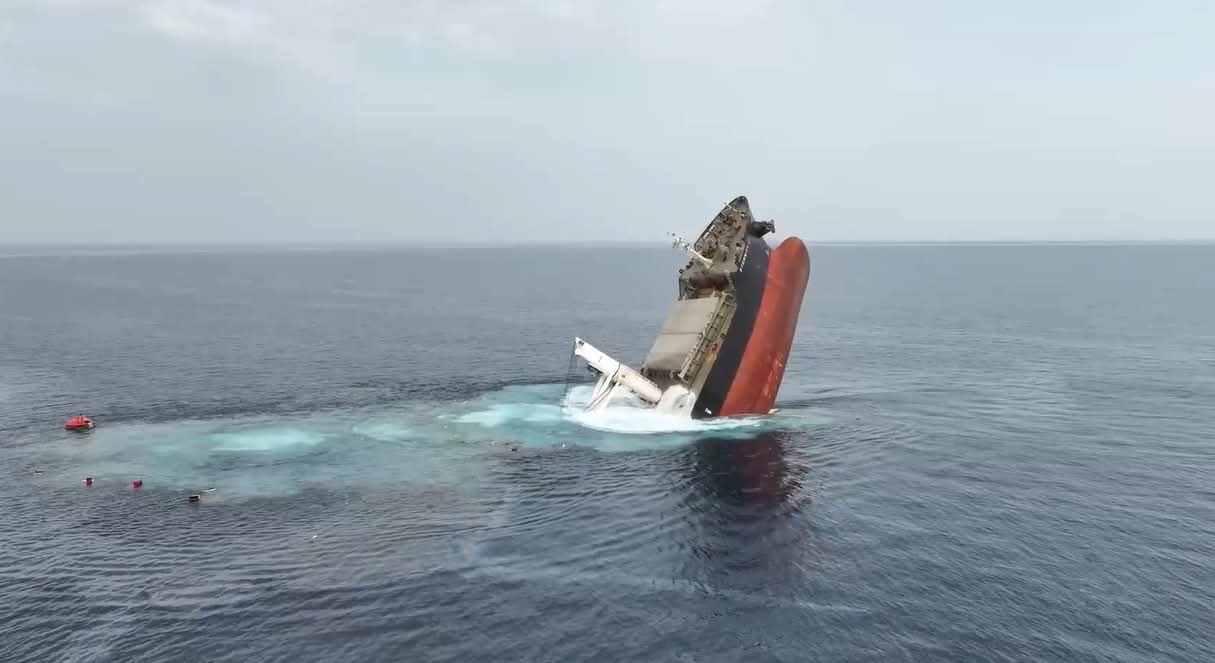Photo: Igor Grochev / Shutterstock
By Jack Wittels and Ann Koh (Bloomberg) — Teams of drones are about to start policing the skies of some of the world’s busiest shipping ports. Their target? Environmental rule-breakers.
It might sound — and look — like something out of a Marvel Avengers movie, but for many ports around the world, these so-called sniffer drones are the best way to enforce new regulations aimed at cutting the air pollution caused by ships.
Regulators are bracing for rules that are meant to lower shipping’s emissions of sulfur oxides, pollutants blamed for acid rain and aggravating human health conditions like asthma. Because the regulations, which start Jan. 1, will require most of the world’s ships to burn more expensive fuels, there’s been speculation some owners may try to cheat to drive down what is their single biggest cost. And that’s where the drones come in.
Super Sniffers
In the Netherlands, home to Europe’s largest port, preparations are underway to use a large, unmanned flying vehicle capable of traveling well over 10 miles from the shore to detect emissions from ships. The local enforcement authority calls it a ‘super drone.’
In Hong Kong, where rule breakers face large fines and up to six months in prison, similar — albeit smaller — machines are currently being tested for the same purpose. Maritime authorities in Denmark and Norway have also already started using the technology.
Authorities can use drones to effectively filter through the tens of thousands of vessels coming in and out of their ports. Knowing in advance if a ship is burning non-compliant fuel means they can target the right carrier for a manual inspection.
In Hong Kong and Shenzhen — where hundreds of ships are currently randomly selected for spot-checks — authorities are working with academics on using drones, said Professor Zhi Ning from the Hong Kong University of Science and Technology.
The unmanned vehicles will fly into plumes of smoke created by vessels, collecting real-time data that is then used to calculate how much sulfur is in the ship’s fuel. The university is field-testing its technology this month and will send staff on boat trips around Hong Kong, whose name means Fragrant Harbor.
Quick Work
“It takes only two to three minutes for us to finish one scanning of the plume of one ship,” said Ning. “We hope to have this joint effort between Hong Kong and Shenzhen for the Greater Bay area. In the end, the air pollution doesn’t have any boundaries — it just flows around.”
In the Netherlands, where the marine fuel sulfur limit is already set at 0.1%, there are plans for unmanned aircraft to start being used for emissions testing in the second half of this year.
The local enforcement authority — the Inspectie Leefomgeving en Transport known as ILT — is also awaiting approval to start using a so-called super drone capable of analyzing the emissions of ships that are much further out to sea, with testing starting by the beginning of next year when the IMO rules kick in. That’s all in addition to Rotterdam’s “sniffer pole,” a fixed installation at the port’s entrance that tests the fumes of all passing vessels.
Drones are cost-effective and will make enforcement much more efficient, said Marco Buitelaar, program manager for clean vessels at the ILT.
Pinpoint Cheats
While the data the drones collect can’t be used in a criminal court case, Buitelaar plans to use their findings to pinpoint which vessels’ fuel tanks to get physical samples from. His team is serious about enforcing the IMO’s rules and is aiming for full compliance. As of April, four ships were being investigated by the public prosecutor for exceeding the existing sulfur limit, according to Buitelaar.
“Drones are not the end of law enforcement,” said Ning. “After we scan the ships, our government can then take the fuel samples from these targets to use in court as physical evidence. The plume is gone after we finish taking the measurement, so it can’t be used.”
The shipping industry is likely to comply with IMO emission regulations, especially major companies that wouldn’t be able to escape the risk to their reputations from cheating, according to Richard Chatterton, an analyst with Bloomberg NEF in Singapore.
International Waters
While using the drones could help spot cheats near coastal areas, it won’t necessarily help to catch them in international waters, often hundreds of miles from land — especially if vessels that are supposed to be using scrubbers to eliminate sulfur emissions choose to switch off the equipment.
“It would be really expensive to be flying these drones out into international waters left, right and center,” said Chatterton. “Flag states are responsible for enforcing pollution regulations, but why would anybody pay that money?”
Back closer to land, other ports are continue to take enforcement seriously. Last year, Norway’s maritime authority uncovered at least five violations of sulfur regulations and started using drones. Denmark launched its own for the same purpose in April. In Singapore, the world’s largest bunkering port, rule-breakers risk jail terms of up to two years.
© 2019 Bloomberg L.P

 Join The Club
Join The Club











